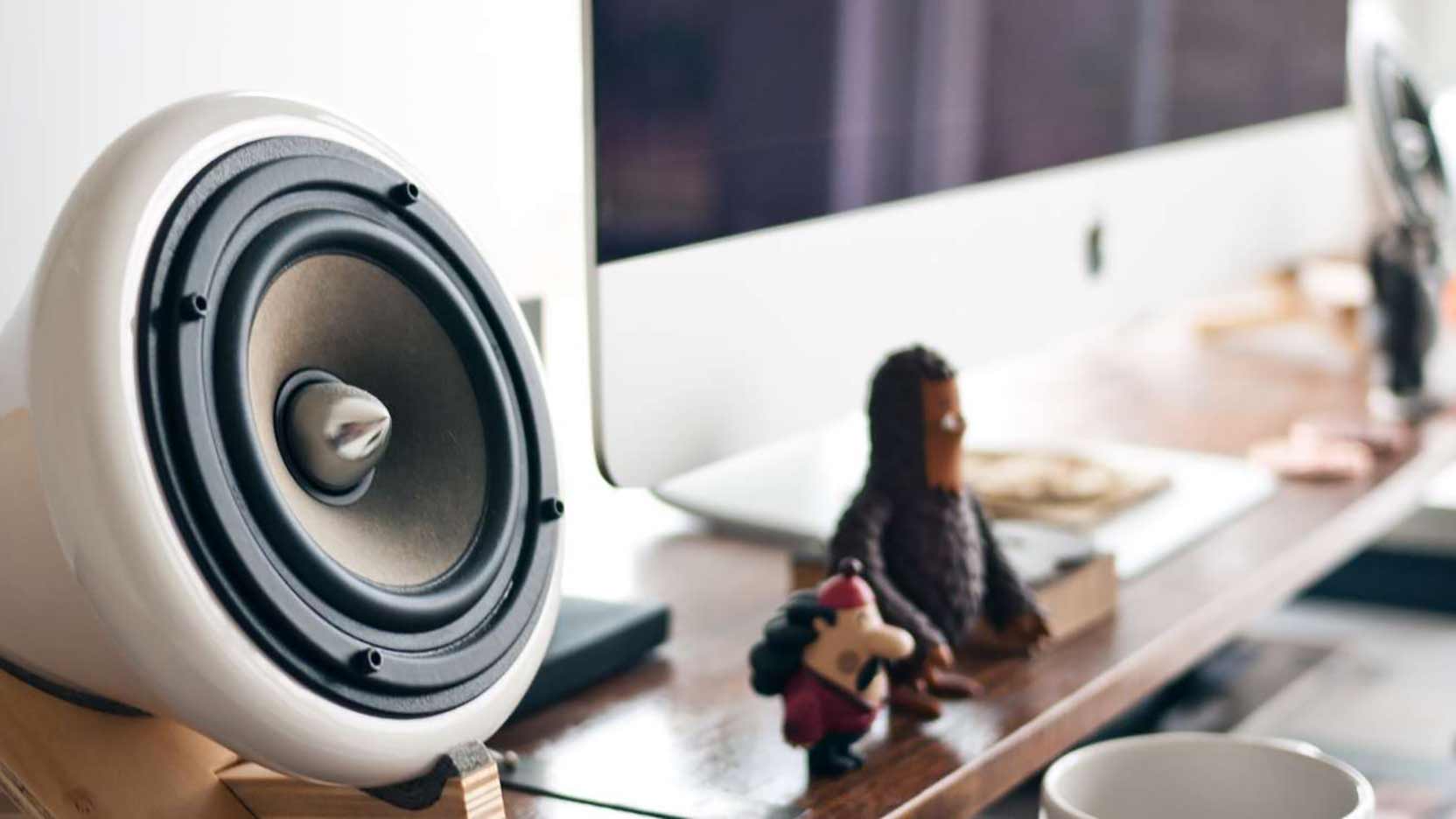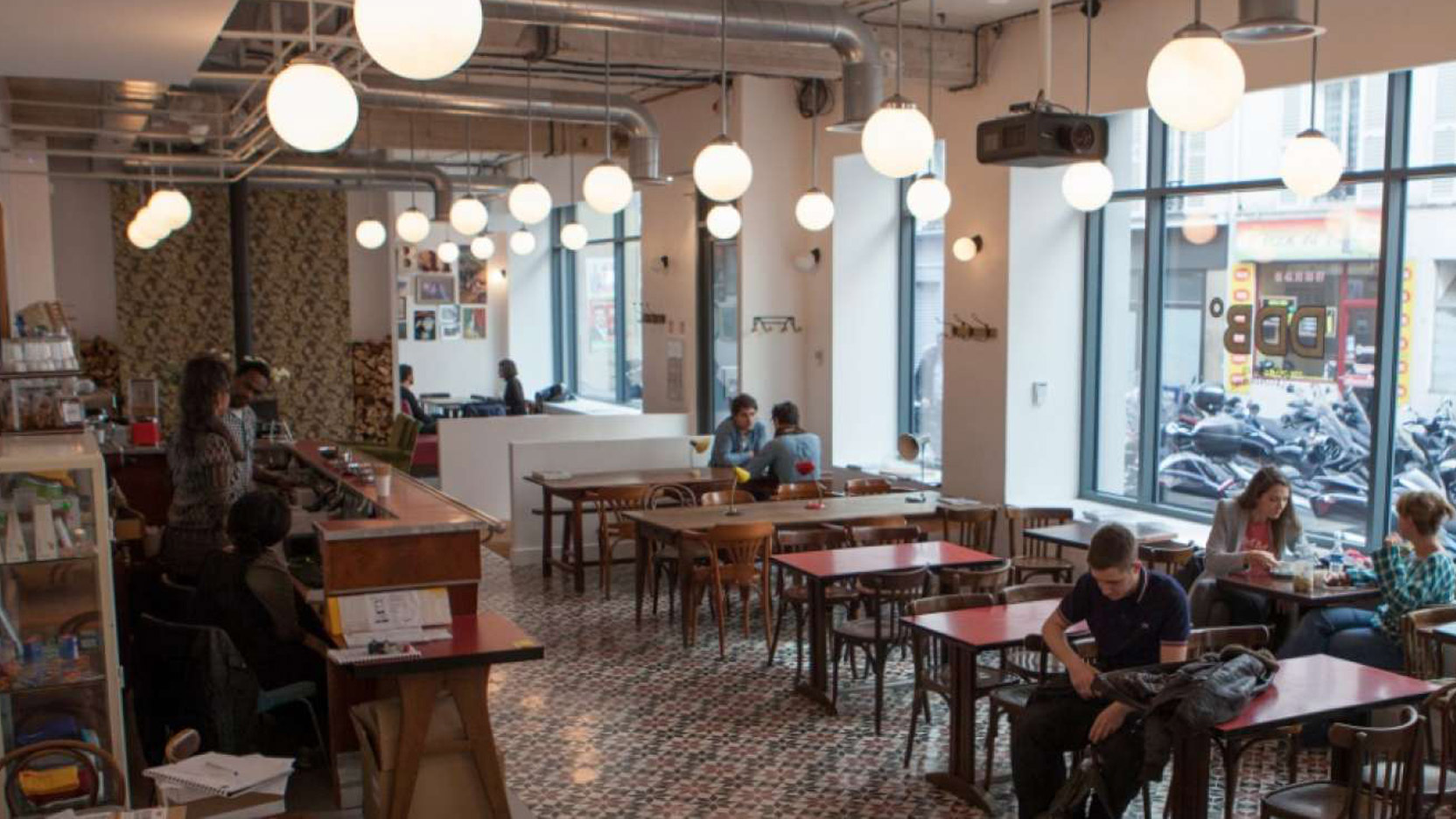Today, foosball and ping pong tables are practically essential features in every self-respecting startup. To reconcile work and fun, companies are increasingly setting up relaxing break rooms that foster employees’ fulfilment and creativity. Do we work more efficiently when we are having fun?
For years, company break rooms were usually cold and impersonal rooms painted white and furnished with the bare minimum: a table, a micro-wave and a small fridge. “Provision is made for break rooms in the labour code, but employees never really used them much,” explains Elisabeth Pelegrin-Genel, an architect and urban planner and the author of Comment (se)sauver (de) l’open space (How to save (yourself from) open-plan offices). But the way relaxation at the office is perceived has gradually changed. Unwinding is no longer considered a waste of time, instead it is seen as a real need for both employees and the company. “This trend no doubt dates back to the first internet bubble in 1995, when employees were seen taking their kick scooters and their dogs to work. They worked hard while having fun together. This is now a trend driven by GAFA (Google, Amazon, Facebook and Apple), the startups that became successful multinational enterprises that fire the imagination.”
Working hard without taking oneself seriously
Break and recreation rooms provide an opportunity to forge ties amongst colleagues, create bridges between departments, and stimulate employees’ creativity by improving the general work atmosphere. Such amenities, which can be quite surprising, are used to attract new talents, and companies are more than willing to let people know about them. Today, companies in Silicon Valley greet their employees in colourful open, playful, relaxing spaces. Google offices are equipped with slides, AOL has pool tables and game rooms, and the Facebook campus designed by Frank Gehry features ball pits, nap rooms and areas where employees can play darts and video games.
In France, relaxing break rooms are said to have emerged in 1995, when the American company Accenture moved to Paris and reorganized its space based, not on people, but on the activities to be carried out. This trend has become prevalent in French companies, especially on company campuses far from city centres, says Pelegrin-Genel. “In such cases there is demand for spaces other than work spaces such as gyms or reading rooms. Before, people were at the office for one purpose only — to get their work done — but today we realize that you cannot stay concentrated for 8 hours in front of a screen, and companies are increasingly banking on these places dedicated to socializing and unwinding.”
“There has been a marked increase in relaxation areas since the 2010s as newly-founded companies began to build gyms and break rooms on their premises right from the start. This was true for firms such as Allo Resto, Le Bon Coin and Davidson Consulting,” says Patrick Dumoulin, the director of Great Place to Work®, a business research and consulting firm. “There is a move toward fun, because we can work hard without always taking ourselves seriously. In addition to unwinding around the traditional coffee machine, we may as well relax while engaging in a different activity. It’s a great opportunity to interact with others and it’s excellent for team cohesion. Companies are paying more and more attention to such rooms where employees enjoy themselves, and I’m a fervent supporter!” According to a survey conducted by Great Place to Work® in 2016, an average of 20% to 25% of premises are dedicated to break rooms in the 66 companies listed as great places to work and live – a ratio that has been on the rise over the past few years.
The ultimate: a terrace for barbecues at the workplace
In Paris, the new premises of Deezer, a company specialized in music streaming, are equipped with wood cabins decorated in minimalist fashion with hassocks to rest on. There is also a gym, where boxing workouts and pilates classes take place during the lunch break. Another example is the WorkCafé at GA Paris. It is a hybrid space designed for working alone or in a group, and for holding meetings (around a large table, with projection on a screen or in armchairs), but it can also be used for lunch, relaxation and entertainment. It is equipped with a television, an iPad with a Deezer subscription and Bluetooth connection on a Bose speaker, a Playstation, a library and magazines. In the new ways of thinking about office fit-outs, work and well-being go hand in hand.
In 2015, the French company Blablacar, the world’s leading car-pooling company, was ranked 6th by the Great Place to Work® institute in the list of companies that offer good quality of life. Beyond the fit-out of their offices — equipped with a foosball game and a kitchen – Blablacar, a follower of the “fun and serious” approach, uses management practices that foster collaboration. In that spirit, the company developed BlaBla Faces, an application in the form of a quiz, whereby employees can learn their colleagues’ given names.
In the future, “large American corporations will continue outdoing each other in spectacular amenities by changing scales and transforming the city,” predicts Pelegrin-Genel, the architect. With the biospheres it is building in the heart of Seattle, Amazon is hitting hard. The spheres, which are due to open in 2017, will house employees in a 5-storey greenhouse sheltering trees and plants from all over the world — a natural environment that could have a positive impact on employees’ creativity. Behind these projects, she adds, “is the idea of a utopian city where one works, sleeps and lives with constant porosity between work and non-work.”
In France, companies remain more modest, although here too the workplace tends to become a place where people eat, drink, shop and are entertained. A trend to install fully-fledged kitchens in companies has been observed for example, at Villa Bonne Nouvelle Orange and DDB. This is a typically French trend reflecting the French tradition of mealtime as the ideal time to socialize and interact. “Another relaxation area we see developing is the terrace, as is the case at aramisauto.com and Direct Assurance,” adds Dumoulin of Great Place to Work France. “I dream of having a terrace at the office where I can organize barbecues on Fridays!”
The latest innovation related to the development of relaxation areas, which proves the importance of a relaxed atmosphere at the office, is the Feel Good Manager. This new position responds to an idea that is prevalent in coworking spaces: “to ensure that collaboration functions the best possible way, there is a need for someone to liven up the relaxation premises.”
By Usbek & Rica
Crédit header : CC0 - Unsplash - Jeff Sheldon



